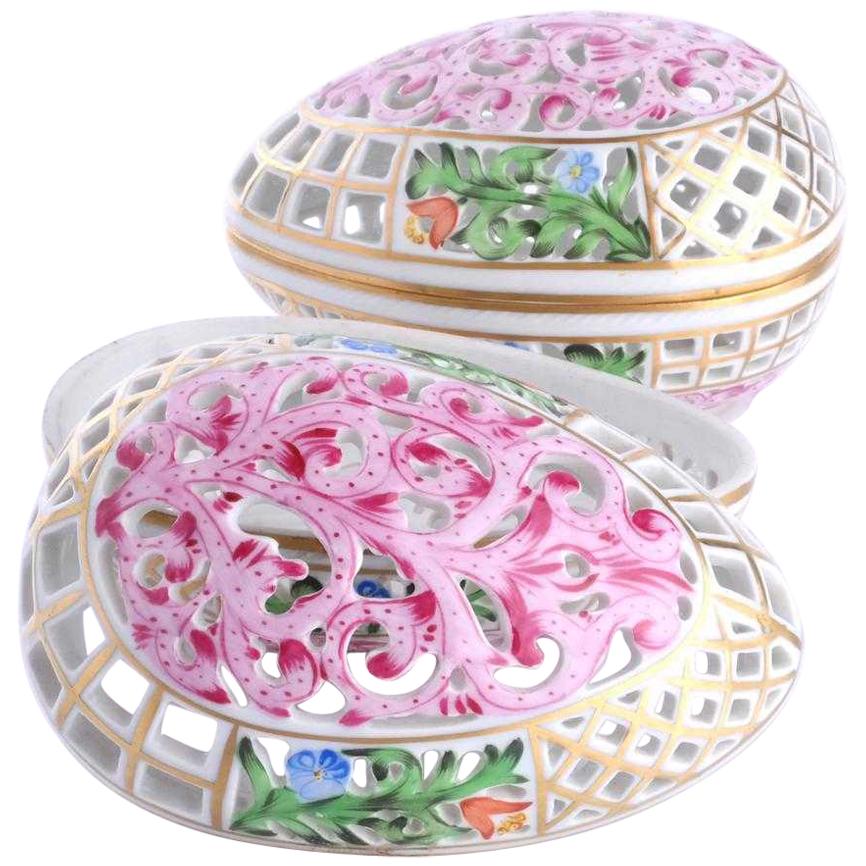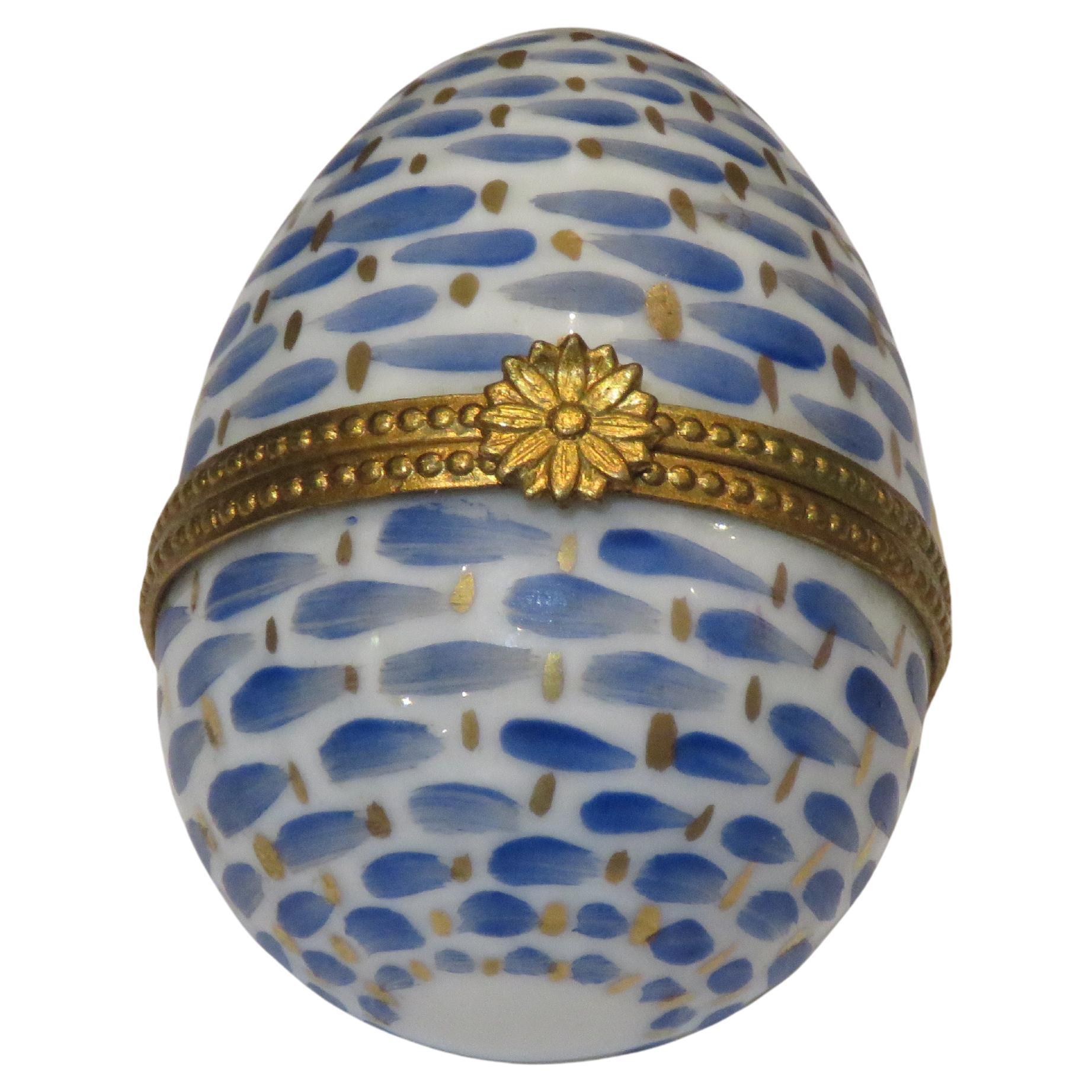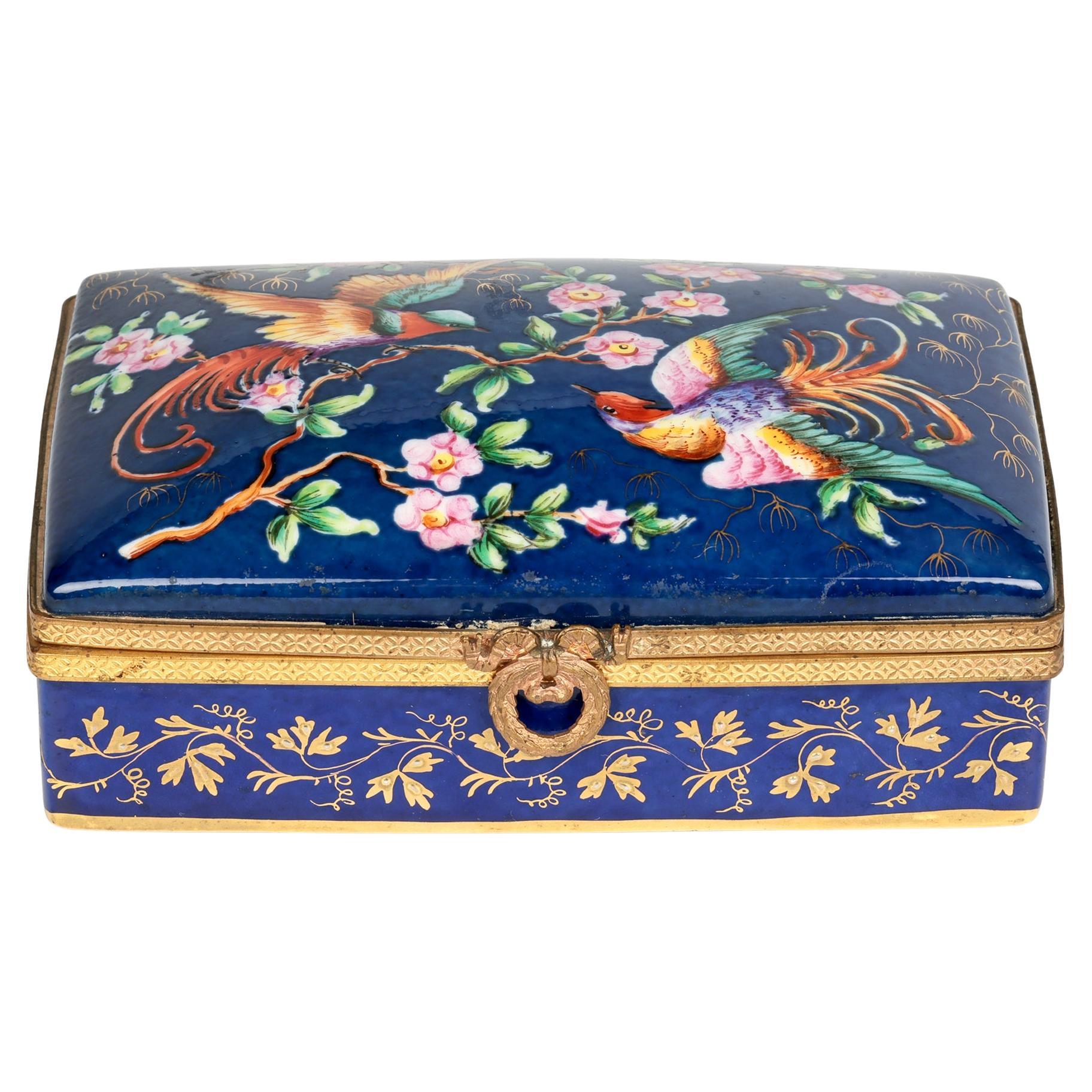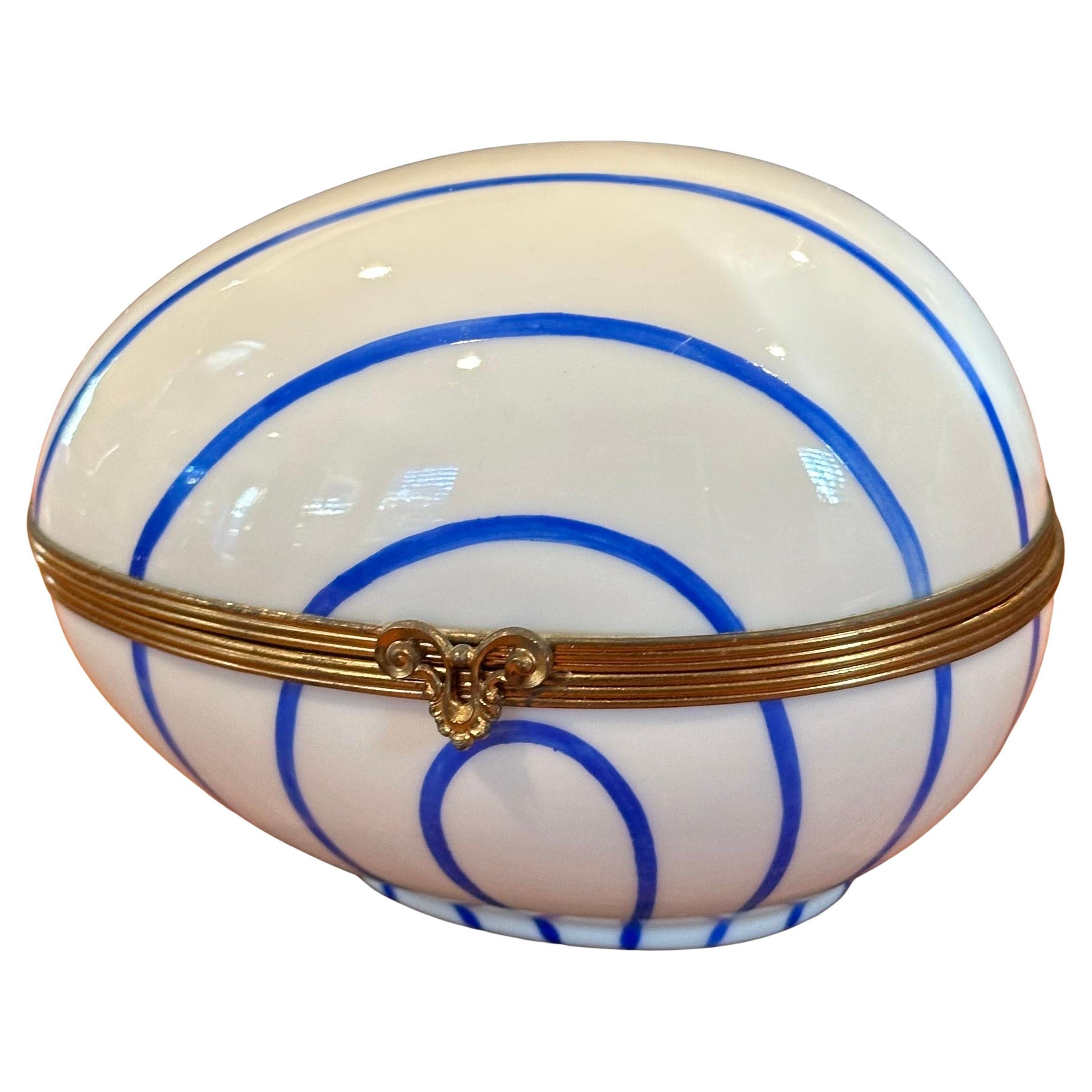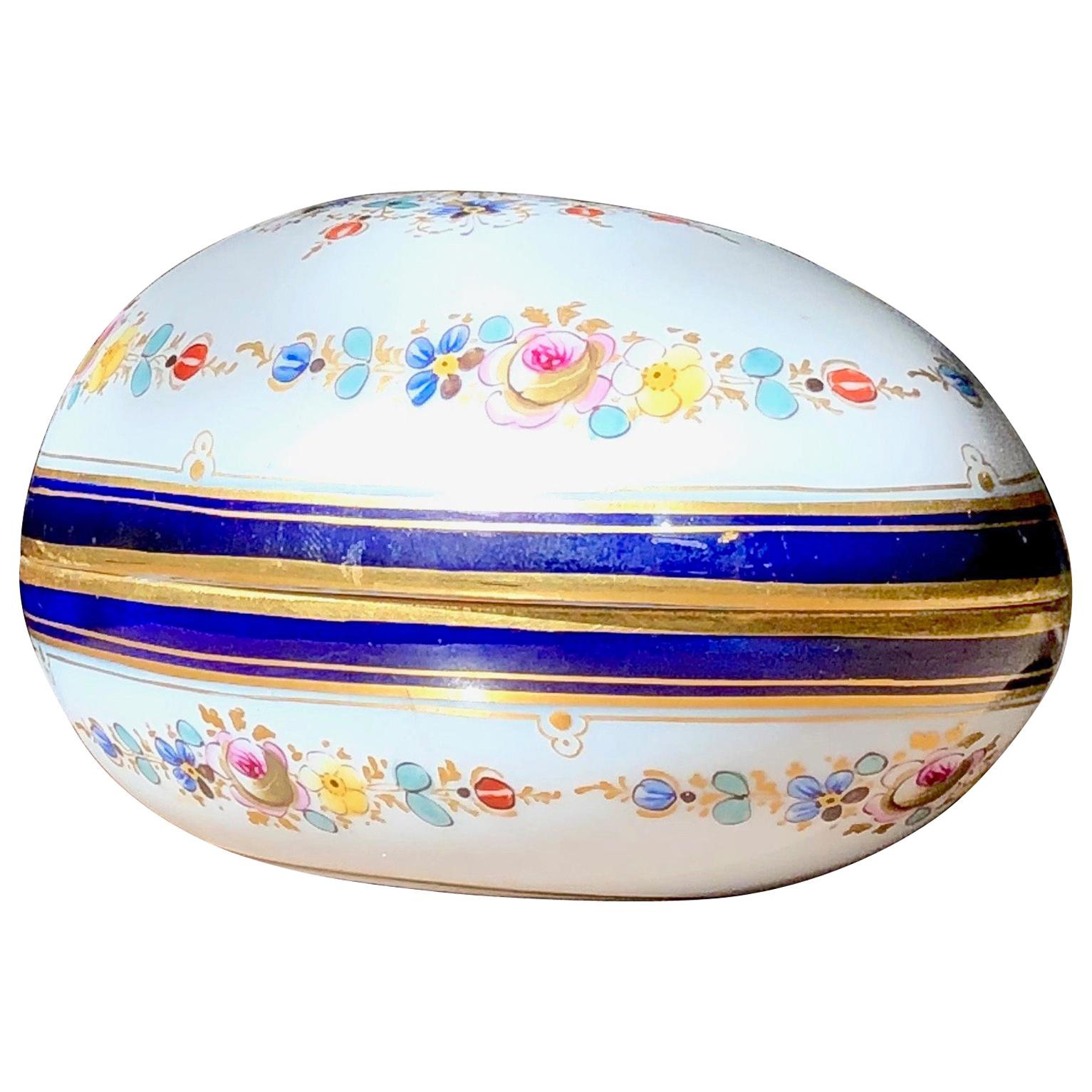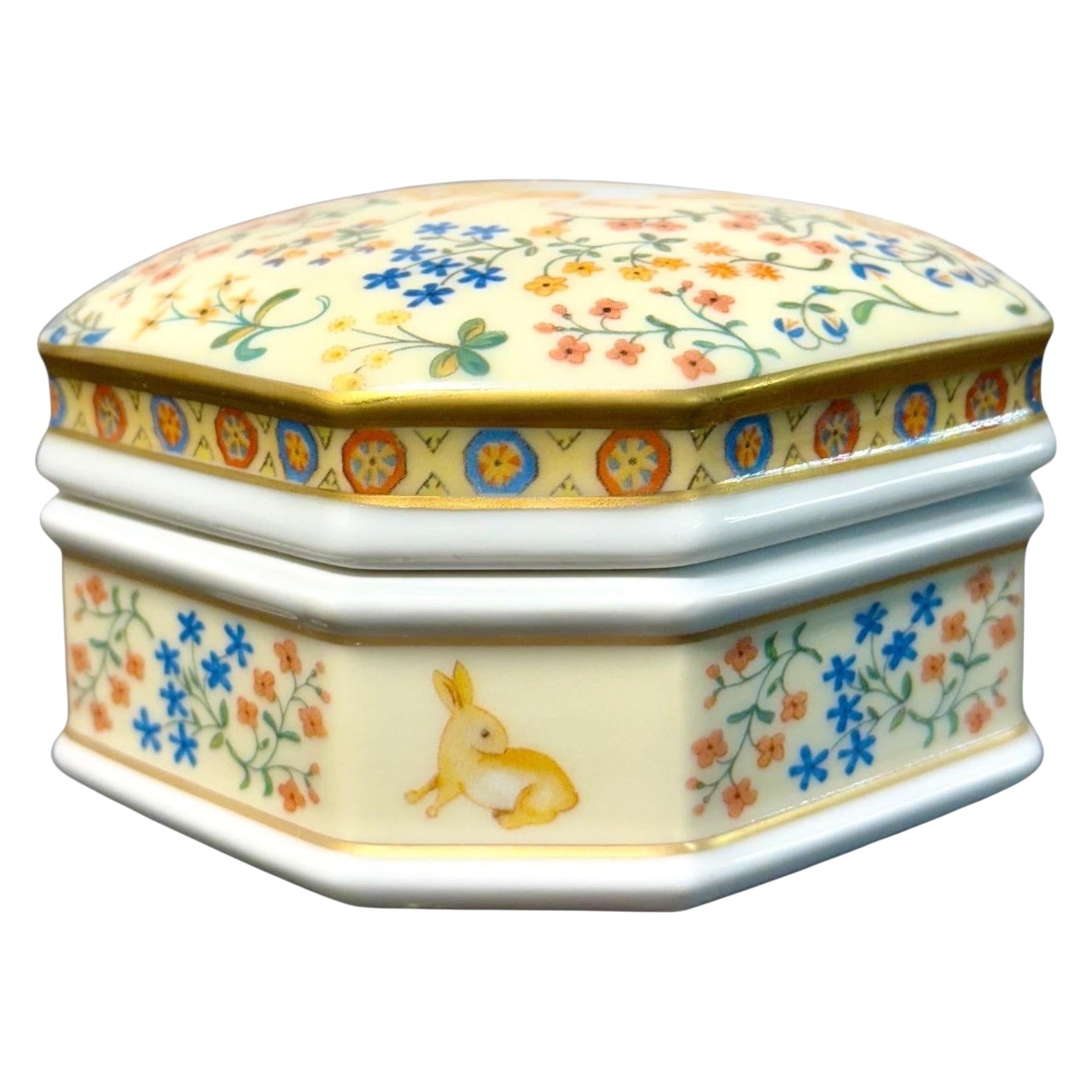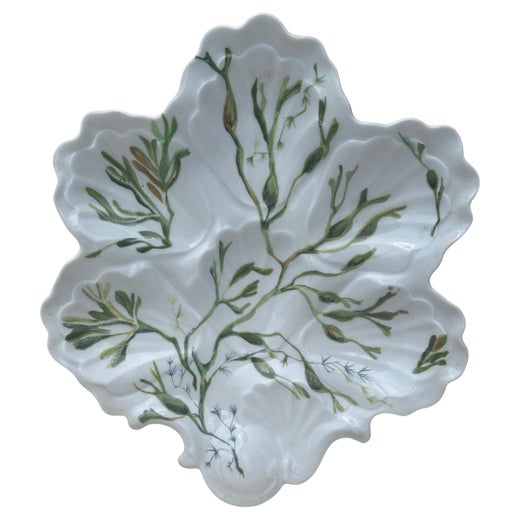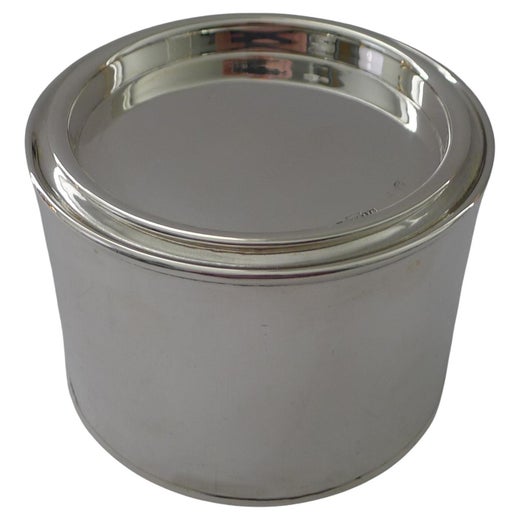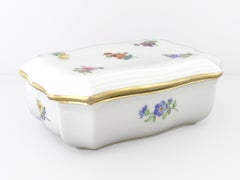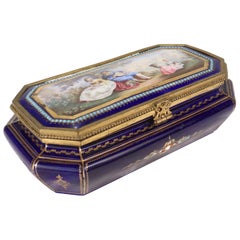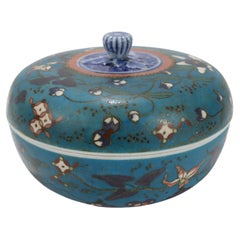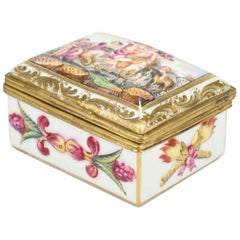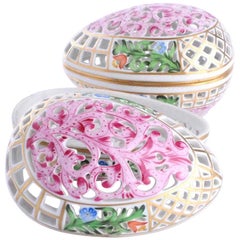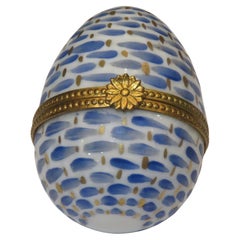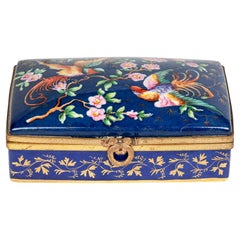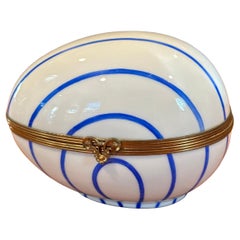Handpainted Limoges Porcelain Egg Box for Asprey
About the Item
- Creator:Asprey & Garrard Limited (Manufacturer),Limoges (Maker)
- Dimensions:Height: 1.58 in (4 cm)Width: 1.66 in (4.2 cm)Depth: 2.37 in (6 cm)
- Style:Modern (Of the Period)
- Materials and Techniques:
- Place of Origin:
- Period:
- Date of Manufacture:Late 20th or Early 21st Century
- Condition:Wear consistent with age and use. It is in overall good, as-pictured, used estate condition with no chips, cracks, or repairs, some fine & light surface scratches and other signs of expected light wear consistent with age.
- Seller Location:Philadelphia, PA
- Reference Number:Seller: DSA INV AZ F231stDibs: LU1610234039692
Limoges
Limoges porcelain has withstood the test of time for centuries. The widely cherished ceramics named for the French city and commune in which they are made are synonymous with sophistication, elegance and refinement. Today, antique Limoges dinnerware, serveware, decorative objects and other porcelain products are coveted and collected all over the world.
The story of Limoges porcelain, which refers to porcelain made in the Limoges region of France — not by a specific factory — begins in 1768. The region is a rich source of kaolin, feldspar and quartz — vital ingredients to the production of this type of pottery.
Porcelain was first made in China and spread all over the world owing to the trade routes to the Far East established by Dutch and Portuguese merchants. Given its origin, English speakers called porcelain “fine china,” an expression you still might hear today. "Fine" indeed — for over a thousand years, it has been a highly sought-after material. Meissen Porcelain (Staatliche Porzellan-Manufaktur Meissen), which was founded in the Electorate of Saxony (now Germany), is one of the preeminent porcelain factories in Europe and was the first to produce true porcelain outside of Asia.
Limoges porcelain refers to porcelain produced in and near the city of Limoges — it does not refer to a specific manufacturer — and it’s distinctive for its luminous hue and bright white qualities, providing an ideal canvas for intricately detailed hand-painted decorations. (Revered Impressionist painter Pierre-Auguste Renoir began his career painting plates in Limoges.)
It wasn’t long before Limoges porcelain captured the attention of King Louis XVI — the region’s first manufactory, established toward the close of the 18th century, was placed under the protection of the King’s brother, the Comte d’Artois. It was later purchased by the King and became Manufacture Royale de Limoges. The facility produced a variety of pieces, including delicate, gold-embellished trinket boxes, ornamental vessels, Rococo-style figurines and elaborate dinnerware service sets.
Following the end of the French Revolution in 1794, Limoges porcelain was no longer restricted, and the commercial porcelain industry ballooned.
By 1819, Limoges had four porcelain factories, and as demand for porcelain grew during the 19th century, the industry expanded in the French city. In 1853, American businessman David Haviland opened the Haviland & Co. factory in Limoges to export porcelain to the United States. The company produced several iconic serveware collections for many American presidents, including Abraham Lincoln, Ulysses S. Grant and Rutherford B. Hayes. Bernardaud opened in the early 1860s.
By 1900, Limoges had 35 factories, which employed close to 8,000 workers. In 1925, Limoges porcelain was shown at the International Exhibition of Modern Decorative and Industrial Arts — the design fair in Paris that brought global attention to the Art Deco style — where it garnered international acclaim.
During the 20th century, Limoges factories such as Bernardaud collaborated with a range of notable artists and designers, including Franz Bischoff, Joan Miró, Raymond Loewy, Alexander Calder and Julian Schnabel, to name a few.
Today, authentic Limoges porcelain tableware, vases and objets d’art continue to gain renown with collectors and design lovers all over the world.
Find an extensive collection of antique Limoges porcelain on 1stDibs.
Asprey & Garrard Limited
The first official Crown Jeweler for the British royal family, Garrard & Co. Limited has crafted iconic and historically celebrated rings, watches, necklaces and other jewelry for centuries.
Garrard Co. Ltd registered its current name in 1909 and, despite a temporary merger and relocation with Asprey, the firm still operates out of its original location on Albermarle St. in London. It was acquired by American private equity firm Yucaipa Companies in 2006.
Master silversmith George Wickes founded Garrard in 1735 and quickly gained a regal platform with patronage from Frederick, Prince of Wales. The company underwent a range of name changes and shifts in leadership over the years, with Robert Garrard becoming a partner in 1792. He assumed sole control of the firm a decade later and eventually passed the company down to his sons — James, Sebastian and Robert Garrard II — where it would remain in the Garrard family until 1946 with the death of Robert’s great-grandson.
Garrard created silver, tableware and decorative objects for the royal family as well as the Crown Jewels for a range of coronations beginning with King Edward VII’s in 1902. The esteemed luxury house created Queen Victoria's Small Diamond Crown, which featured colorless stones and was suitable to be worn while she mourned the passing of her last husband, Prince Albert. Later, for the coronation of Queen Elizabeth II in 1953, Garrard provided a pair of gold armlets. The company’s 1893 Girls of Great Britain and Ireland tiara adorns Queen Elizabeth II on British banknotes.
Among Garrard’s best known works is undoubtedly Princess Diana’s engagement ring — a 12-carat blue sapphire surrounded by 14 diamonds, set in 18-karat white gold. Unlike most royal engagement rings, the one Princess Diana chose wasn’t a one-of-a-kind piece commissioned from the Crown Jeweler, but rather a catalog offering for anyone who could swing the $60,000 price tag. As a result, this was a matter of controversy within the royal family. It is now Kate Middleton’s ring.
Garrard is committed to ethical sourcing and sustainable practices. Today, its all-female design team — led by creative director Sara Prentice — continues to merge ageless techniques with modern technology to uphold the firm’s legacy in the creation of precious handcrafted engagement rings, brooches and other adornments.
While Garrard and the royal family parted ways in 2007, the house still produces pieces that captivate new generations of jewelry wearers all over the world, just as it has for hundreds of years.
Find antique Asprey & Garrard Limited jewelry and furniture on 1stDibs.
- ShippingRetrieving quote...Shipping from: Philadelphia, PA
- Return Policy
More From This Seller
View All20th Century German Decorative Boxes
Porcelain
Early 20th Century French Belle Époque Decorative Boxes
Porcelain
20th Century Japanese Meiji Ceramics
Enamel
Early 20th Century Italian Rococo Revival Porcelain
Porcelain
Antique Late 19th Century French Rococo Revival Decorative Boxes
Porcelain
Early 20th Century French Decorative Boxes
Art Glass, Blown Glass
You May Also Like
Mid-20th Century Hungarian Rococo Revival Porcelain
Gold Leaf
20th Century French Decorative Boxes
Porcelain
Antique Late 19th Century French Belle Époque Decorative Boxes
Brass
20th Century French Decorative Boxes
Porcelain
Antique Late 19th Century German Empire Porcelain
Porcelain
20th Century French Jewelry Boxes
Porcelain, Paint
